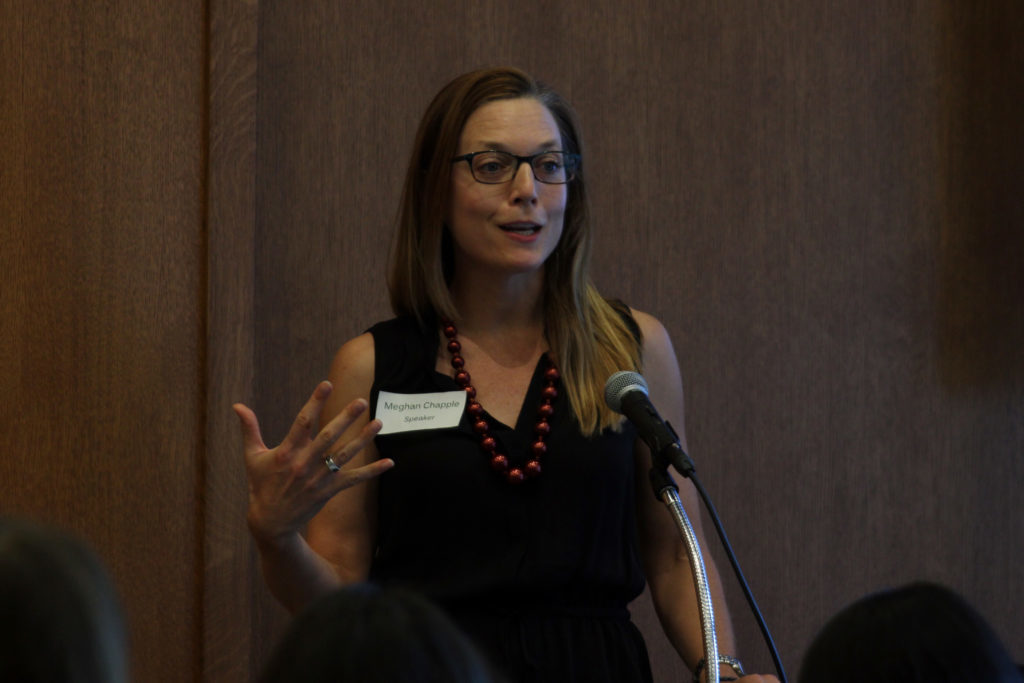Updated: Oct. 1, 2018 at 11:16 a.m.
GW’s sustainability office is one of nine universities and organizations that crafted a set of guidelines this summer about cutting carbon use at colleges and universities.
Fourteen sustainability experts, including Meghan Chapple, the director of the Office of Sustainability, contributed to the Internal Carbon Pricing in Higher Education Toolkit. The toolkit includes a series of recommendations and examples about how colleges and universities can develop their own internal strategies to put a price tag on carbon to reduce carbon emissions.
Writers and editors for the toolkit, which launched last month, said the document will serve as a guide for higher education institutions looking to reduce their carbon use and combat climate change.
The document is available through Second Nature – a nonprofit organization based in Massachusetts focused on sustainability in higher education – and discusses carbon pricing – a practice where the use of energy and materials that rely on carbon are “priced” to discourage carbon use, authors of the toolkit said.
“Limited resources make it difficult to fund emissions reduction measures,” experts said in the toolkit. “An internal price can clarify when emissions reduction projects are worth the financial investment.”
University spokesman Tim Pierce said GW offered feedback on the outline of the toolkit and helped develop sections on implementation. He said officials primarily worked with representatives from Yale University, Swarthmore College and Second Nature.
“When universities unite on issues like climate change, their voices are stronger and more powerful,” Pierce said in an email.
Pierce said the toolkit was completed this fall.
Casey Pickett, an editor and author of the toolkit and the director of the Carbon Charge at Yale University, said experts for the toolkit met at the Second Nature Summit in Tempe, Ariz. in February, when he began collaborating with Swarthmore College and Second Nature. He said last spring, the group started to develop the toolkit and invited several schools – including GW – to join them in writing and editing the toolkit.
“Higher education institutions have a special role to play in policy issues like carbon pricing,” Pickett said in an email. “We can experiment with policy, conduct objective research and share the results. This toolkit is a new platform to enable schools to share their carbon pricing experiments, research, implementation tools and lessons learned.”
Pickett said a few private companies that have implemented internal prices on carbon cannot legally talk about it, but higher education institutions do not have the same restrictions. He said administrators can experiment with internal carbon pricing systems and be transparent about their carbon consumption.
“We can also open up our systems to researchers, who can provide objective, peer-reviewed analysis of the efficacy of our approaches, among many other questions,” he said.
Aurora Winslade, also an author of the toolkit and the sustainability director at Swarthmore College, said pricing carbon is a sustainability strategy used by more than 50 national and subnational governments and more than 1,300 corporations. She said that for higher education officials, carbon pricing is a simple way to reduce carbon emissions because it makes using carbon more expensive, and the toolkit can provide institutions with resources, like case studies and ideas for educating others about carbon pricing.
“Given the urgency of climate change, higher education leaders and community members need to take a stance and support our elected officials on all sides of the aisle to price carbon,” she said.
Breanna Parker, the co-author of the toolkit and an alumna of Smith College, said the toolkit includes resources like spreadsheets that can be used to calculate how carbon should be priced for an institution. She said the toolkit also includes some theoretical policy design choices, like what types of data on emission levels should be included.
“Right now, fossil fuels and carbon emissions aren’t being accounted for,” Parker said. “If we can add a carbon price on to that, maybe we can balance out the playing field, and I think that having this in higher education can kind of be like a laboratory or testing ground for this policy tool.”
Nathaniel Graf, an author of the toolkit and the climate action senior fellow for the Office of Sustainability at Swarthmore College, said they have worked on engaging other schools on internal carbon pricing strategies since 2016. They said Swarthmore College and Yale University were some of the first institutions in higher education to implement internal carbon pricing.
Graf said economists reached a consensus on pricing carbon several years ago, finding that it was effective. But they said to actually match the price on carbon with the scale of climate problems, economists need a broad public understanding and support behind the concept of carbon pricing.
They said the toolkit could help institutions have a better understanding of how carbon pricing can reduce carbon emissions.
“A price on carbon is a fair, feasible and powerful policy solution to make fossil fuels unprofitable to extract and to make zero-carbon alternatives cost competitive,” Graf said.
This post was updated to reflect the following correction:
A previous version of this article used incorrect pronouns to refer to Nathaniel Graf and Casey Pickett. The pronouns are now correct. We regret this error.





